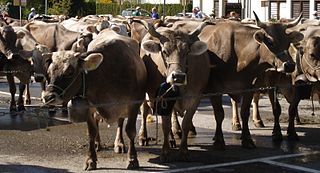| Portulaca sclerocarpa | |
|---|---|
| Scientific classification | |
| Kingdom: | Plantae |
| Clade: | Angiosperms |
| Clade: | Eudicots |
| Order: | Caryophyllales |
| Family: | Portulacaceae |
| Genus: | Portulaca |
| Species: | P. sclerocarpa |
| Binomial name | |
| Portulaca sclerocarpa A.Gray | |
Portulaca sclerocarpa is a rare species of flowering plant in the purslane family known by the common names 'ihi makole and po`e. It is endemic to Hawaii, where it is known only from the island of Hawaii and an islet off of Lanai. Ten occurrences exist for a total of over 1000 individuals. It is a federally listed endangered species of the United States. [1]

The Portulacaceae are a family of flowering plants, comprising 115 species in a single genus Portulaca. Formerly some 20 genera with about 500 species, were placed there, but it is now restricted to encompass only one genus, the other genera being placed elsewhere. The family has been recognised by most taxonomists, and is also known as the purslane family; it has a cosmopolitan distribution, with the highest diversity in semiarid regions of the Southern Hemisphere in Africa, Australia, and South America, but with a few species also extending north into Arctic regions. The family is very similar to the Caryophyllaceae, differing in the calyx, which has only two sepals.

Endemism is the ecological state of a species being unique to a defined geographic location, such as an island, nation, country or other defined zone, or habitat type; organisms that are indigenous to a place are not endemic to it if they are also found elsewhere. The extreme opposite of endemism is cosmopolitan distribution. An alternative term for a species that is endemic is precinctive, which applies to species that are restricted to a defined geographical area.

Hawaii is the 50th and most recent state to have joined the United States, having received statehood on August 21, 1959. Hawaii is the only U.S. state located in Oceania, the only U.S. state located outside North America, and the only one composed entirely of islands. It is the northernmost island group in Polynesia, occupying most of an archipelago in the central Pacific Ocean.
This is a perennial herb with short, woody branches growing up to about 20 centimeters long. It produces white, pink, or bicolored flowers. The plant grows on cinders and lava substrates. [1]

Lava is molten rock generated by geothermal energy and expelled through fractures in planetary crust or in an eruption, usually at temperatures from 700 to 1,200 °C. The structures resulting from subsequent solidification and cooling are also sometimes described as lava. The molten rock is formed in the interior of some planets, including Earth, and some of their satellites, though such material located below the crust is referred to by other terms.
Threats to this rare species include introduced ungulates and plants, fires, and volcanic activity. [1]

An introduced species is a species living outside its native distributional range, but which has arrived there by human activity, either deliberate or accidental. Non-native species can have various effects on the local ecosystem. Introduced species that become established and spread beyond the place of introduction are called invasive species. The impact of introduced species is highly variable. Some have a negative effect on a local ecosystem, while other introduced species may have no negative effect or only minor impact. Some species have been introduced intentionally to combat pests. They are called biocontrols and may be regarded as beneficial as an alternative to pesticides in agriculture for example. In some instances the potential for being beneficial or detrimental in the long run remains unknown.

Ungulates are any members of a diverse group of primarily large mammals that includes odd-toed ungulates such as horses and rhinoceroses, and even-toed ungulates such as cattle, pigs, giraffes, camels, deer, and hippopotamuses. Most terrestrial ungulates use the tips of their toes, usually hoofed, to sustain their whole body weight while moving.









